MIA – PACT Airborne Forces
MIA – PACT Airborne Forces
When Battlefront published RED DAWN and the Airborne Assault Missions Pack 18 months ago, I found one casual comment disturbing. Page 46 says “WARSAW PACT armies (Czechoslovakian, East German, and Polish) lacked dedicated airborne infantry (as opposed to airborne raiding troops) …”
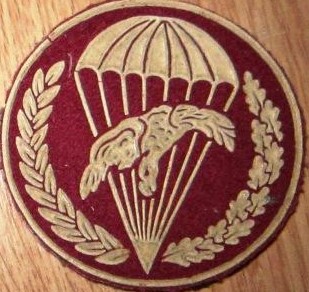
This is a distinction without a difference, and a dismissal. I intend to correct the record and give some ideas how these MIA units can be incorporated into the game in casual play.
I’m going to follow the sequence in WARSAW PACT in this discussion but start with a unit found in all PACT armies.
Long Range Reconnaissance/Assault Reconnaissance Companies

The Reconnaissance (Razvedka, Aufklarung, Pruzkrum, Rekonesans) Battalions of all PACT armies contained a specially trained infantry company called the Long-Range Reconnaissance Company. From the mid-70s, these units received airborne (parachute) training allowing them to jump from helicopters and small fixed-wing aircraft. See FM100-2-3 pg 4-76 for confirmation.
The company’s two large platoons had four RPG teams instead of three. This was because the company lacked an AT-7 SAXHORN missile section (three launchers). So the Assault Landing Company found as an infantry attachment to HINDs is a perfect match to one of this unit’s platoons.
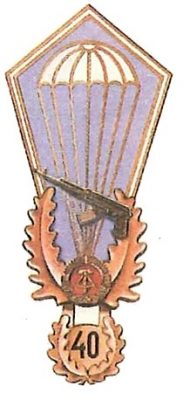
There are two ‘easy hacks’ to give this unit accurate standing. First, give it the ability to do a parachute landing in Airborne Assault Missions. Second, allow the purchase of one or two MI-8 HIPs (depending on unit size) at one Army Point to enable this unit without HINDs. With only six HINDs in most PACT divisions (and zero in some) they were far more likely to arrive in transport helicopters than HINDs.
In a future article I intend to discuss PACT reconnaissance units in more detail.
EAST GERMANY
Throughout most of the Cold War the organized East German parachute forces were found in Falschirmjager Battalion Number 40 ‘Willie Sanger.’ This unit, stationed on Rugen Island, was the EG equivalent of spetsnaz. However, many other members of the Volksarmee received parachute training. In 1986 Battalion No. 40 reorganized as Luftsturm Regiment No. 40 ‘Willie Sanger.’ The new unit retained the original force as BN No. 1 and formed two battalions of falschirmjager with cadres from the old unit. These two battalions were modeled on the Soviet separate air assault battalions found in Air Assault Brigades and stationed in Potsdam.
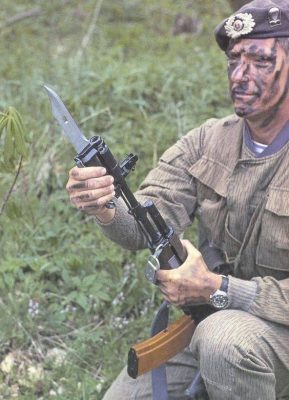
They were intended to assume the role of separate air assault battalions already found in Soviet armies stationed in the west. They would either join a Soviet army in the GSFG or join the 3rd and 5th East German Armies on mobilization.
Again, an easy hack can put these units in your East German TY Force in a friendly game. Simply use the stats and organization of the Soviet Air Assault Battalion (pg. 50, WWIII TY SOVIET). Then treat them as an EG unit, not allied. These troops can do an airborne assault, or ride HIPs for 1 point per HIP. However, the HIND units found the battalion force are reduced to one unit and strictly optional. EG only had two HELICOPTER Regiments.
If BF ever recognizes that Air Assault Brigades had some heavy equipment, don’t be bashful about adding BTR-D to these troops – the actual EG equipment was wheeled BTR-40s, but they had the same capability – ATGM, mortars, and AAA.
You can even use the Soviet Air Assault Platoon (TSU712) figures to represent the falschirmjager, painting the berets in greenish tan. I mixed these figures in with the EG infantry to make a unit easily distinguishable from other EG or Soviets.
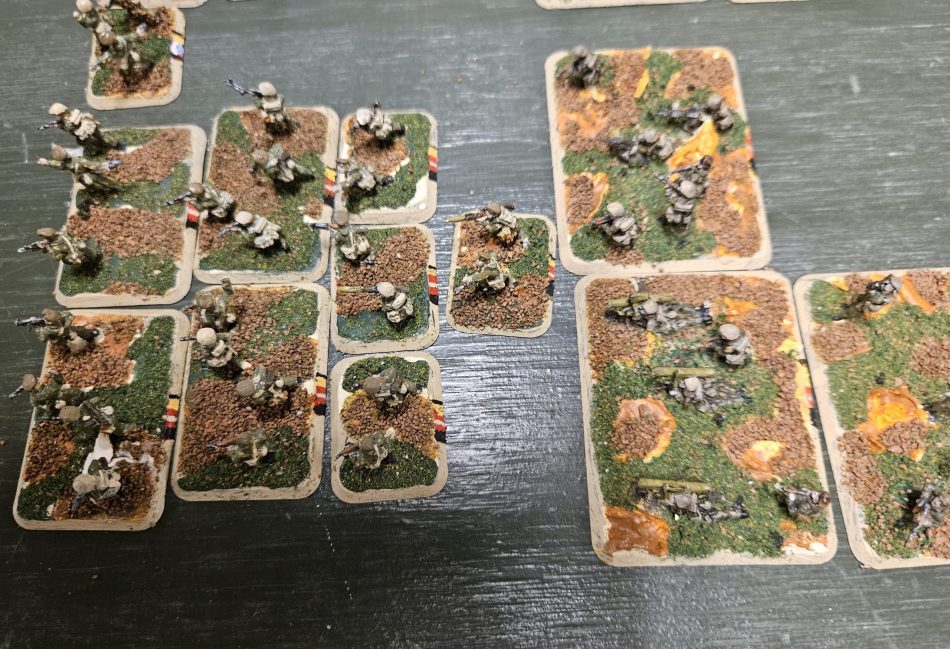
If you want to model a company of elite BN NO. 1 in the invasion of Denmark, use the stats from the VDV-Afghansky (RED DAWN pg 20-21) deducting 2 points from the platoons and 1 point from the HQ. Members of this battalion experienced surrogate campaigns in Africa alongside the Cubans and local forces, so this rating is appropriate.
CZECHOSLOVAKIA
The first post-war Czech airborne unit was organized in 1947. Eventually this unit evolved into the 22nd Airborne Brigade. It is mentioned as jumping into either Stuttgart (D+4) or Rattstat (D+5) in the Czech annex to Seven Days to the Rhine. This obviously is a purely airborne operation as mass helicopter maneuvers were several years in the future (1967 for the Soviets). Unlike the Poles and EG, the Czechs had sufficient transport aircraft to drop an entire battalion in one lift throughout the Cold War.
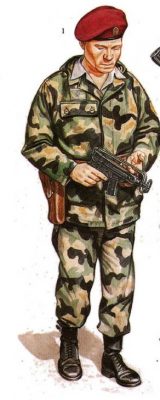
During the ‘70s the Brigade went through several reorganizations and by 1980 was called the 22nd Special Airborne Regiment. The original airborne unit was separate and titled the 71st Airborne Strike ‘Division'(the Czech terminology for battalions). Like the contemporary Soviet Air Assault Brigades, 22nd Regiment now had three ‘divisions’ and like its Soviet counterparts, operated as the Central Front air assault force. Eventually all the Soviet brigades became jump qualified, so considering this and its retention of the name and a special training battalion the unit was jump qualified in 1985 as well as trained in helicopter operations.
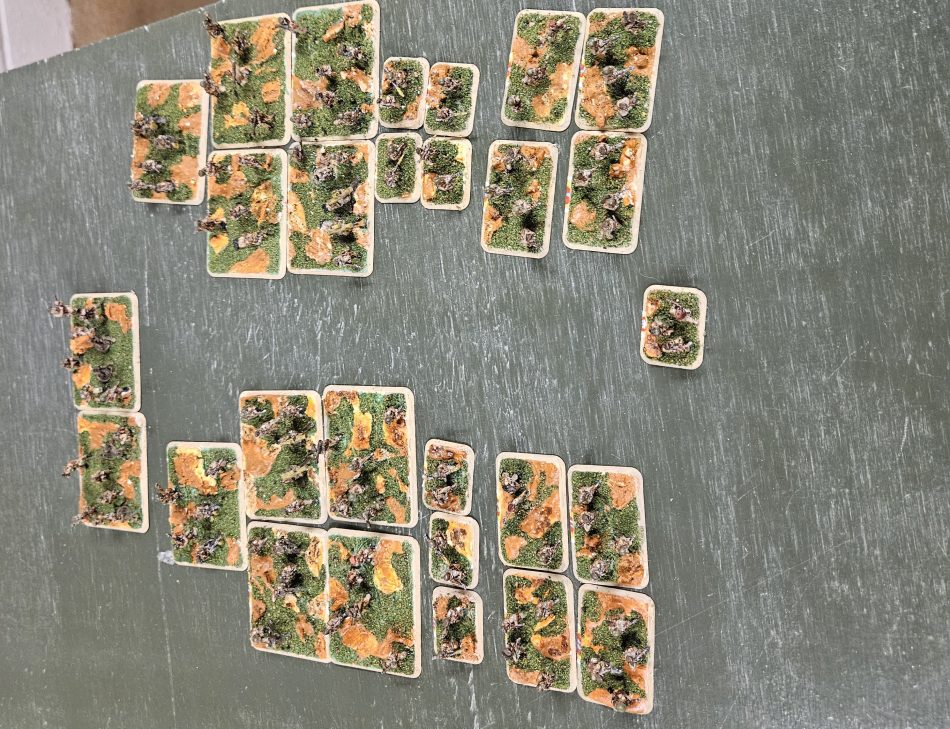
Like the falschirmjager, the simplest way to represent this unit is use the Air Assault statistics from TY Soviets. The Czechs had more helicopters than the East Germans, but half of them belonged to the Czech Air Force. Again I would make the HINDs in the Air Assault Formation optional and limit it to one unit.
TSU712 figures can be used to represent this Czech unit, which wore red-brown berets. As I did for Willie Sanger I modelled them with mixed berets and standard helmets. The 71st Airborne Strike unit can be represented using the VDV Afghanski statistics, again without vehicles.
When support vehicles are considered for their units at some future date, the PRAGA was used for air defense, the OT-64 used in place of other BTR-D.
POLAND
The 6th Pomorska Air Assault Division was organized in 1957 paralleling the Soviet structure for their 1950’s Air Assault Divisions – three regiments (of two battalions) with a self-propelled assault gun battalion and towed artillery. The Poles adopted the Soviet-manufactured ASU-57 and used SKOT (OT-64) transports in applications where the Soviets would eventually use BMD and BTR-D.

The Poles balked at the cost of upgrading the ASU-57s to ASU-85s, although some sources claim the Soviets loaned ASU-85 during OPERATION DANUBE in 1968.
The Poles didn’t invest in a large fleet of transports, relying instead on Soviet aircraft to move the division in a mass drop. (The author vividly remembers text and captioned picture in a late ‘60s Army Field Manual. Caption described the loaded truck as ‘Polish paratroopers on the way to the drop zone,’ evoking an image of doing parachute landing falls off the back of a truck. The text explained that they would be riding in Soviet aircraft). In the late 1970s the Poles began downsizing the 6th Division, disbanding the assault gun battalion and at least three parachute battalions. The downsizing continued until the 6th Pomorska officially became a brigade in 1986. Throughout, the 6th Pomorska retained jump status.
The Poles can be represented by the Soviet Air Assault units, with the same caveats about optional HINDs. If the Soviet unit ever receives BTR-D augmentation, the Poles should use SKOT/OT-64 models for transport. Polish paratroopers wore a red beret trending toward ‘crimson.’
SOVIETS
The Soviets had their Air Assault Divisions (AAD), now represented in RED DAWN. There were six in 1985, down from 11 in 1960. There also was a full ‘training’ division at the VDV school. In time of war this could be mobilized. This reduction was caused initially by changing the Air Assault regiments to three battalions and later by the creation of ‘Air Assault’ (later Landing Assault) brigades.
The experiment with helicopters started with the 1st Provisional Airborne Brigade in 1967, which included the 51st Guards Separate Parachute Regiment and organic helicopters. The Soviets initially came to the same conclusion as the USA – that helicopter riders don’t have to be jump qualified. So in 1970 the 11th and 99th AAD were reorganized as the 11th and 13th Air Assault Brigades. In 1973 a 21st Brigade was organized, and the designation was changed to Landing Assault Brigades, confirming their non-jump status. These units were collectively titled Landing Assault Units of the Soviet Ground Forces. They wore the uniform of the motor rifle troops and were mostly officered by the ground forces.
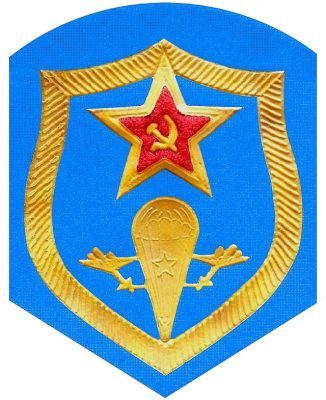
These early Landing Assault formations had an organic helicopter group.
The organization of Landing Assault Brigades continued apace through the ‘70s, although only the first three retained an organic helicopter group. The initial organization was three separate landing assault battalions and a landing assault artillery battalion. As BMD production continued, many added a BMD battalion.
In 1979 the 105th Guards AAD was disbanded, forming five new landing assault brigades and the reinforced 345th Guards Parachute Landing Regiment. This infusion of paratroopers into the Landing Assault forces called into question the oversight of the program. In 1983 STAVKA assigned training and oversight of the Landing Assault forces to the VDV. From that date all Landing Assault units received jump training and began wearing the distinctions of the VDV. A total of 15 Landing Assault Brigades were formed, 13 CATEGORY A, one CATEGORY C and one CATEGORY D (cadre and equipment only).
During this period, many Armies received Separate Assault Landing Battalions. If they were barracked near a Landing Assault Brigade, they were administered by that headquarters, leading NATO intelligence to distinguish between Air Assault (four or five battalions) and Airmobile (three battalions) brigades. At least 27 separate Landing Assault Battalions existed. Additionally, as BMD and BTR-D production continued, some Landing Assault units received these vehicles.
These forces are accurately represented in RED DAWN and TY SOVIET with a minor and a major exception. The minor exception is that the mixed units of the Landing Assault forces (BMD/no BMD) are ignored. This requires only a minor hack – the optional unit (grey box) on the Formation Diagram should have the ability to include the other company, i.e. a BMD Battalion could have a third company using the Air Assault company from TY SOVIET and vice versa.
The major hack is giving the TY SOVIET air assault battalion the choice to use support units from the BMD Battalion in lieu of the HINDs. As noted above, most of the Landing Assault brigades DID NOT have organic helicopters, including 35th Guards in the GSFG, so the current organization is wrong for these units. And all had access to the same weapons as the BMD battalions.
The last Landing Assault special case is two Regiments formed for the new Combined Arms Corps (CAC), which I will discuss in a future installment. The 5th CAC and the 48th Guards CAC both had independent Landing Assault Regiments as well as an independent attack helicopter regiment and an independent transport/utility helicopter regiment, giving a capability like the three original Landing Assault Brigades. The main way these regiments differed from their predecessors was the mix – from creation one battalion of the regiment was equipped with BMDs and the other was ‘leg.’
These two units, created in 1983, went through intensive training regimens under the command of hand-picked officers, and could claim VDV Afghansky status. The hack involved here is allowing a VDV Afghansky BMD company to decline its transport at a savings of two AP.
The Naval Landing Infantry Brigades will be a future topic. They had an air assault battalion. So stay tuned.
This is a complete catalogue of the jump-capable PACT units that should be available for PACT allies, with recommendations for using them in home games, and a discussion of the adjustments necessary to accommodate variations of Soviet Air Assault/Landing Assault units. Enjoy!

Page 46 says “WARSAW PACT armies (Czechoslovakian, East German, and Polish) lacked dedicated airborne infantry (as opposed to airborne raiding troops) = BF don’t want to make lists and models for them .
BF’s claim – whatever the reason – is inaccurate. That’s my point. And with the exception of the EG family of SPW-40s with various weapons, no models are necessary – the PACT paratroopers already used modified VDV gear, wore (more practical) berets, and rode (when available) OT-64s. PACT players shouldn’t have to take an allied Air Assault company with a flock of HINDs to simulate helicopters. So for casual play, they can follow my suggestions (or make scenario rules that suit them better).
Nicely done, and variety is the spice of life! More units to vary the same old stuff.
thanks!
Very good write up.
The only request i would make is that you rotate the picture for the Czech/Slovak forces so we can appreciate it properly. The BTR-40 would be a really cool addition for GDR airborne or airmobile forces. The AT-7 SAXHORN missile is new to me I had not heard of it before. That could really improve AT capabilities.
There are a few niggles that crept in. The GDR had “Strichtarn” camouflage. “Flecktarn” camouflage was trialled by the FGR (West Germans) in the 70s but only adopted in the 1990s. The paras are FALLSCHIRMJAEGER with 2 ll from “fallen”- to fall. A Fallschirm is a screen to protect you while you are falling.
BTW we already have a version of the BTR-D in the form of the BTR-ZD 23mm AA Platoon which is the BTR-D with the 23mm AA. It would of some interest to find out how the BTR-D or the BTR-40 was transported.
Thanks for an excellent read. This certainly was a labour of love.
I can only plead no contest to ‘flecktarn’ vs ‘stricktarn’ as I’ve seen it both ways referring to the DDR uniform. I have pictures captured on the net of DDR BTR-40 with AA (presumably ZU-23s) and racked SAGGERS but I didn’t want to go there – not necessary for the ‘simple’ hack Use the following URL or look up BTR-40 in Tank Encyclopedia
https://www.google.com/search?sca_esv=69400fafeec60409&sca_upv=1&sxsrf=ADLYWIKuY3Ho7-hsmycZWg5n2Re4fEImfA:1725143316715&q=btr-40&udm=2&fbs=AEQNm0Aa4sjWe7Rqy32pFwRj0UkWd8nbOJfsBGGB5IQQO6L3J_86uWOeqwdnV0yaSF-x2jogM63VUdBhAMVqo6r6ESHk5gYCycVYeSiTstipcfTqmDX4HENY8qrzy053qKvdRZFWn-VmYPJETamxffmtEKSqSFyN1NAs7geTy2Zjz_QIIZYxp-nlO2-_BmwI3ttsV3gNreTXhU1gZ0r7wI6MyQGb9r9hAw&sa=X&sqi=2&ved=2ahUKEwim-9DUo6CIAxWgGlkFHZ8eDsIQtKgLegQIEhAB&biw=1920&bih=919&dpr=1#vhid=-6kcP__2Ly42TM&vssid=mosaic
Thank you for a great article on the Warpac Airborne forces for completion of our TY games. This is much appreciated and very well done, thank you Jim.
Vielen dank